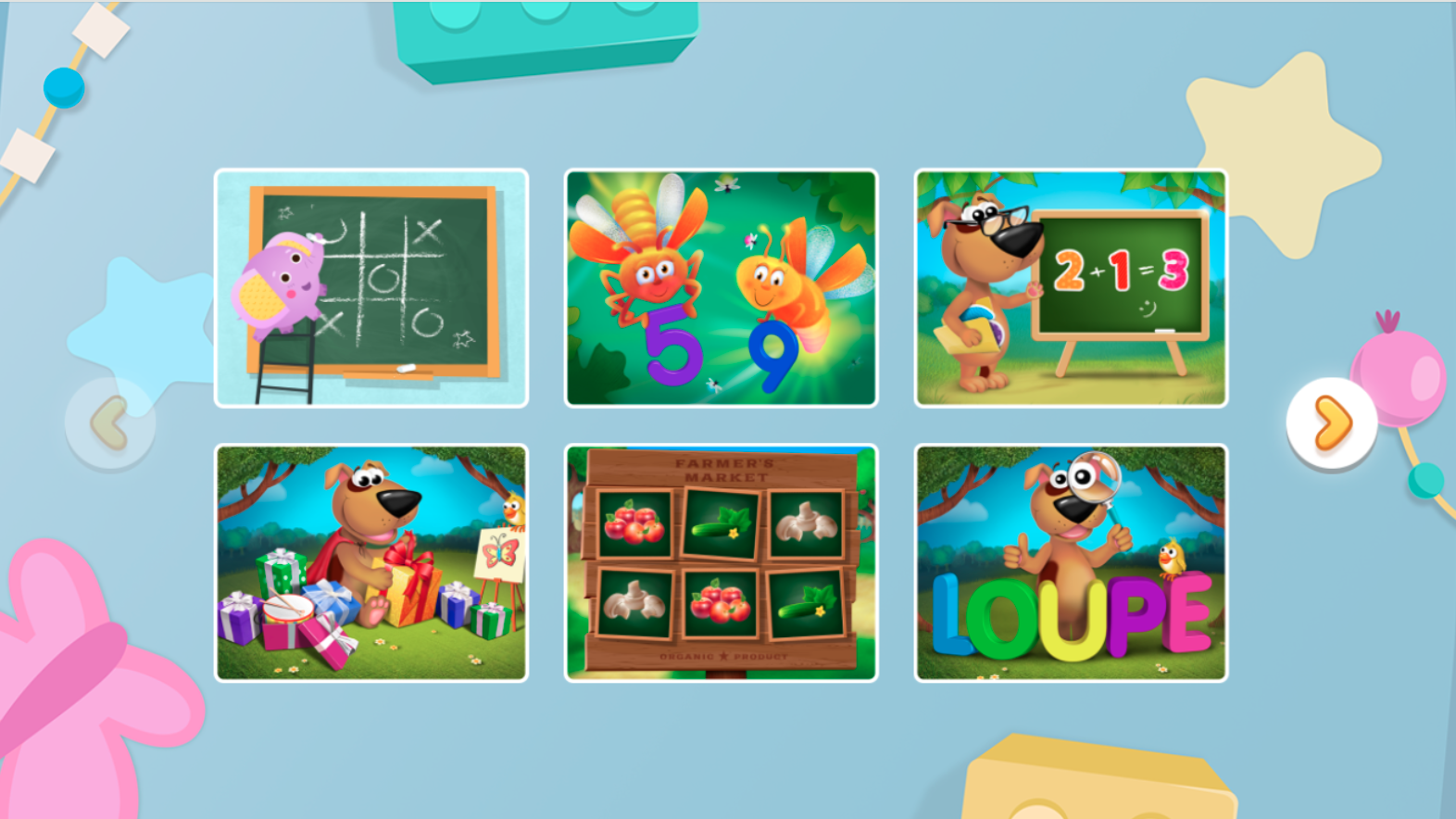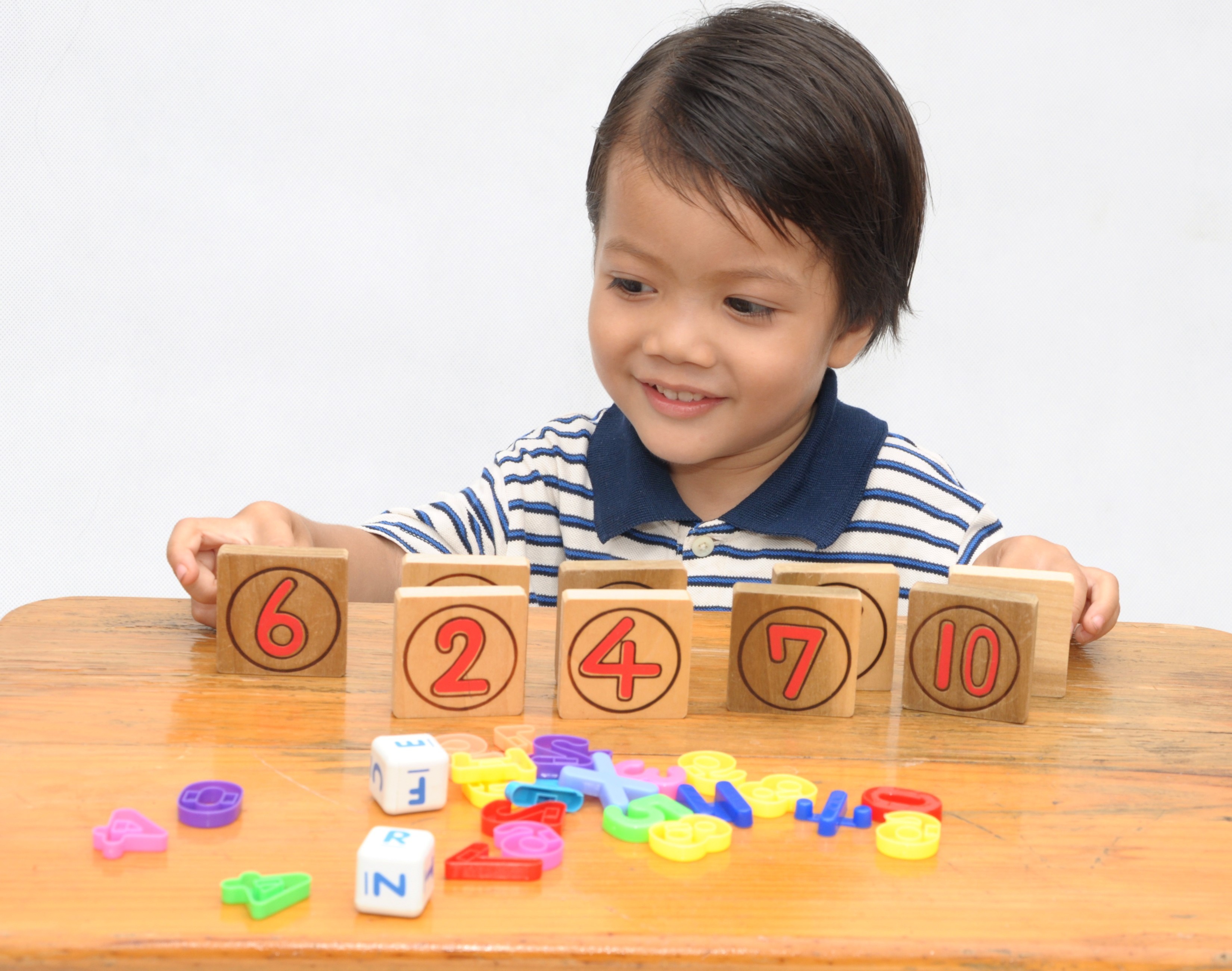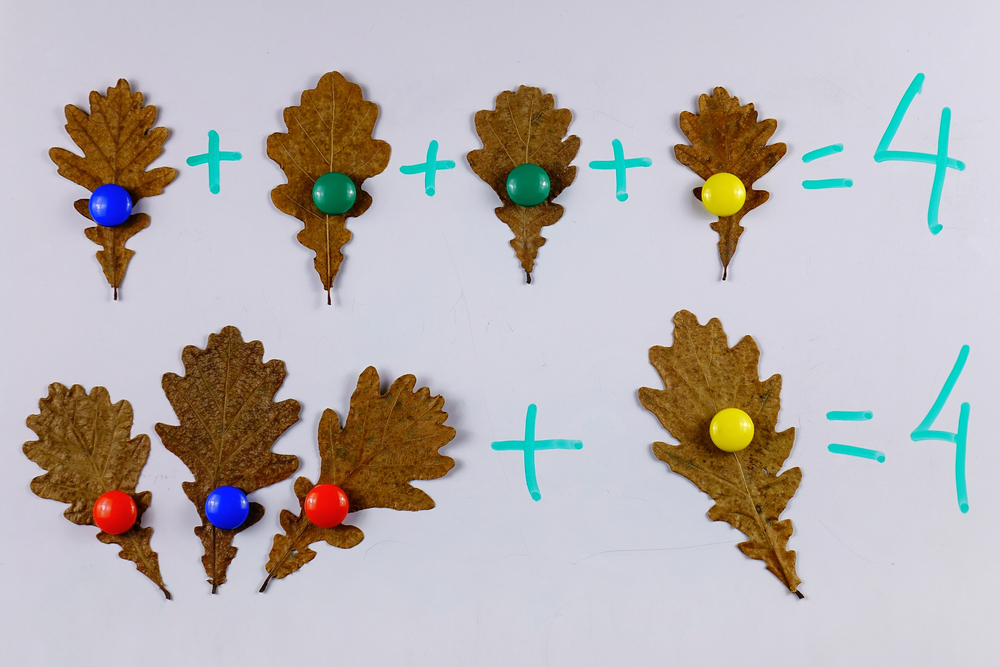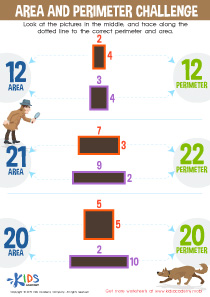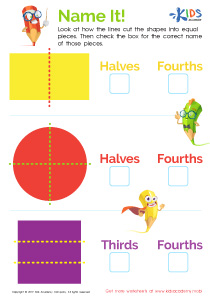Tracing Shapes Worksheets for Ages 8-9
4 filtered results
-
From - To
Introducing our latest educational resource, the Tracing Shapes worksheets, meticulously designed for children aged 8-9. This engaging collection offers a variety of shapes that will capture the interest of young learners, encouraging them to explore and reinforce their understanding of geometric figures. Through tracing activities, children will enhance their fine motor skills, spatial awareness, and gain confidence in geometry basics. Suitable for both classroom settings and at-home learning, our Tracing Shapes worksheets for Ages 8-9 are the perfect tool to spark curiosity and nurture a love for mathematics in a fun, interactive way. Dive into the world of shapes with us today!
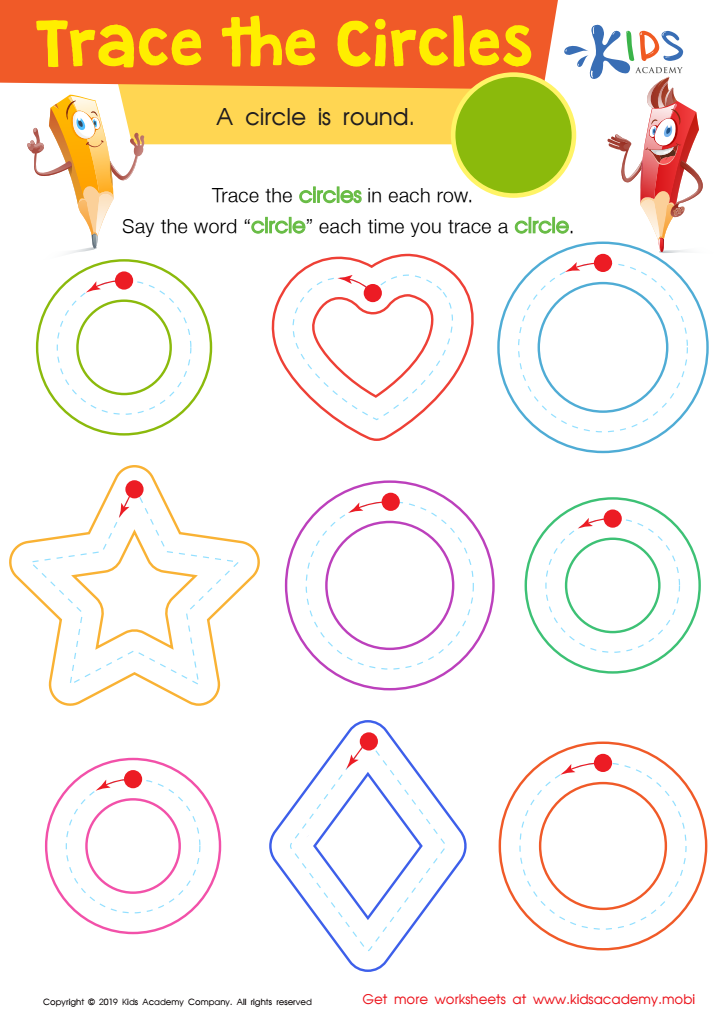

Trace The Circles Worksheet
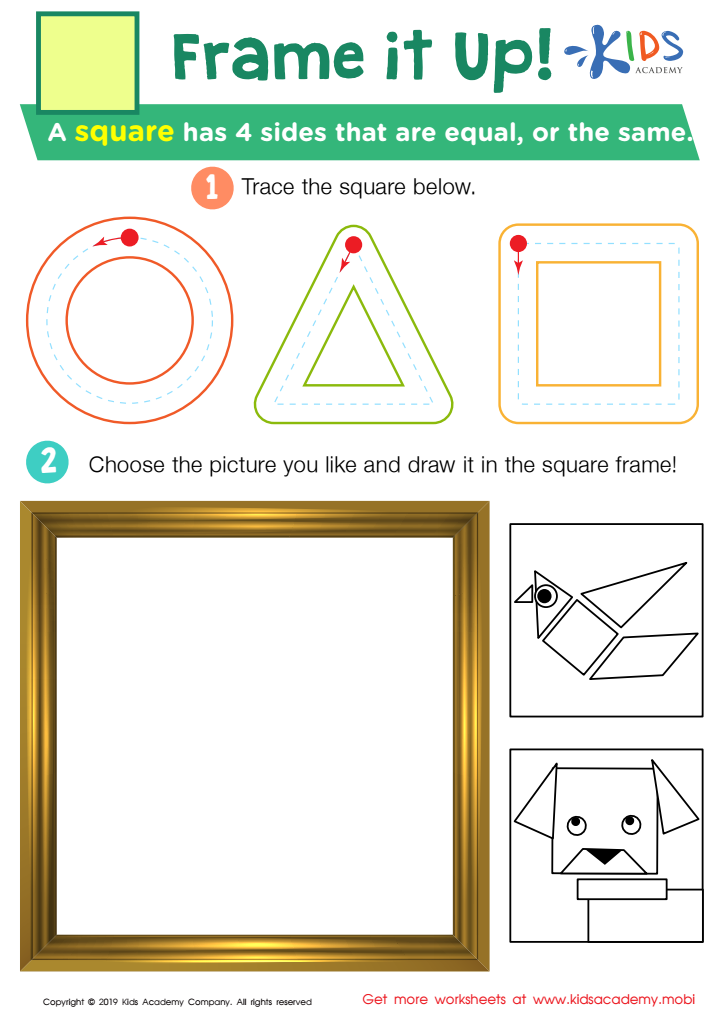

Frame it Up Worksheet


Drawing with a Little Monster Worksheet
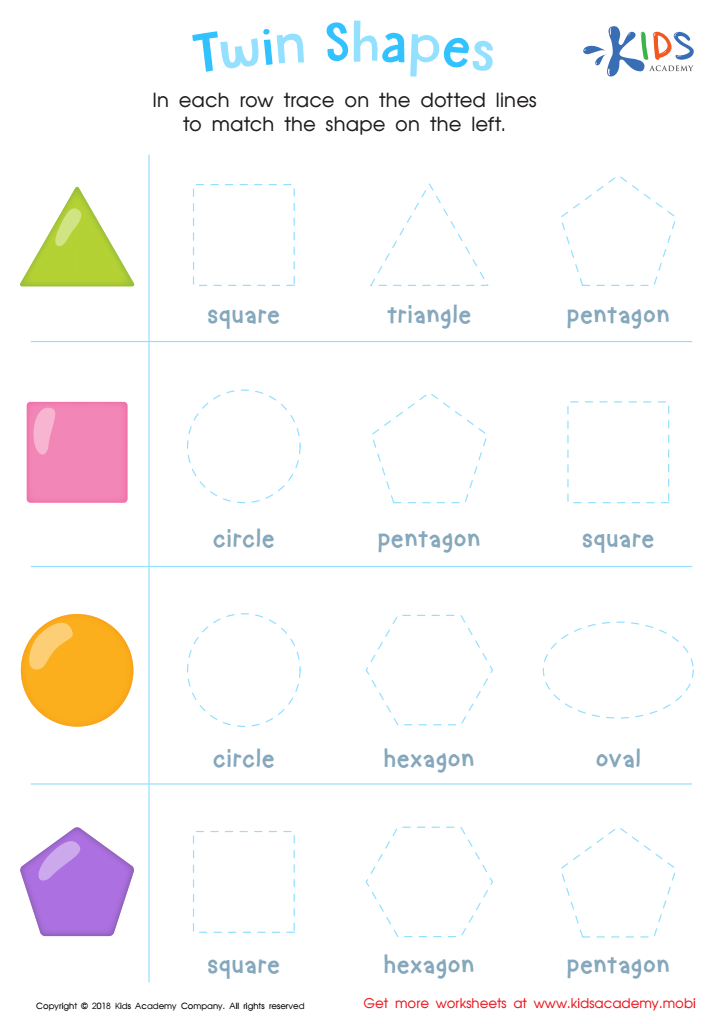

Twin Shapes Dot-to-Dot Worksheet
Tracing Shapes worksheets for Ages 8-9 represent a pivotal tool in the development of geometric understanding and fine motor skills among children. At the ages of 8-9, children are at a crucial stage where they transition from basic to more complex geometric concepts. Tracing Shapes worksheets serve as an effective bridge, reinforcing their grasp on shapes while enhancing their precision and control over writing instruments.
These worksheets are not just about following lines; they are a foundational step towards understanding spatial relationships, symmetry, and properties of shapes. By tracing various shapes, children learn to recognize and differentiate between them, which is essential for their mathematical development. This hands-on activity also promotes attention to detail, a skill that is beneficial across all areas of learning.
Moreover, the act of tracing aids in the improvement of fine motor skills. The control required to trace shapes accurately helps in the strengthening of hand-eye coordination and prepares children for more intricate writing tasks. This is particularly important for Ages 8-9, as it's a period where children refine their writing abilities and start to engage with more complex tasks.
In summary, Tracing Shapes worksheets for Ages 8-9 are invaluable resources. They not only lay the groundwork for a deeper understanding of geometry but also contribute significantly to the development of fine motor skills and attention to detail, making them a cornerstone of early education.
 Assign to My Students
Assign to My Students


